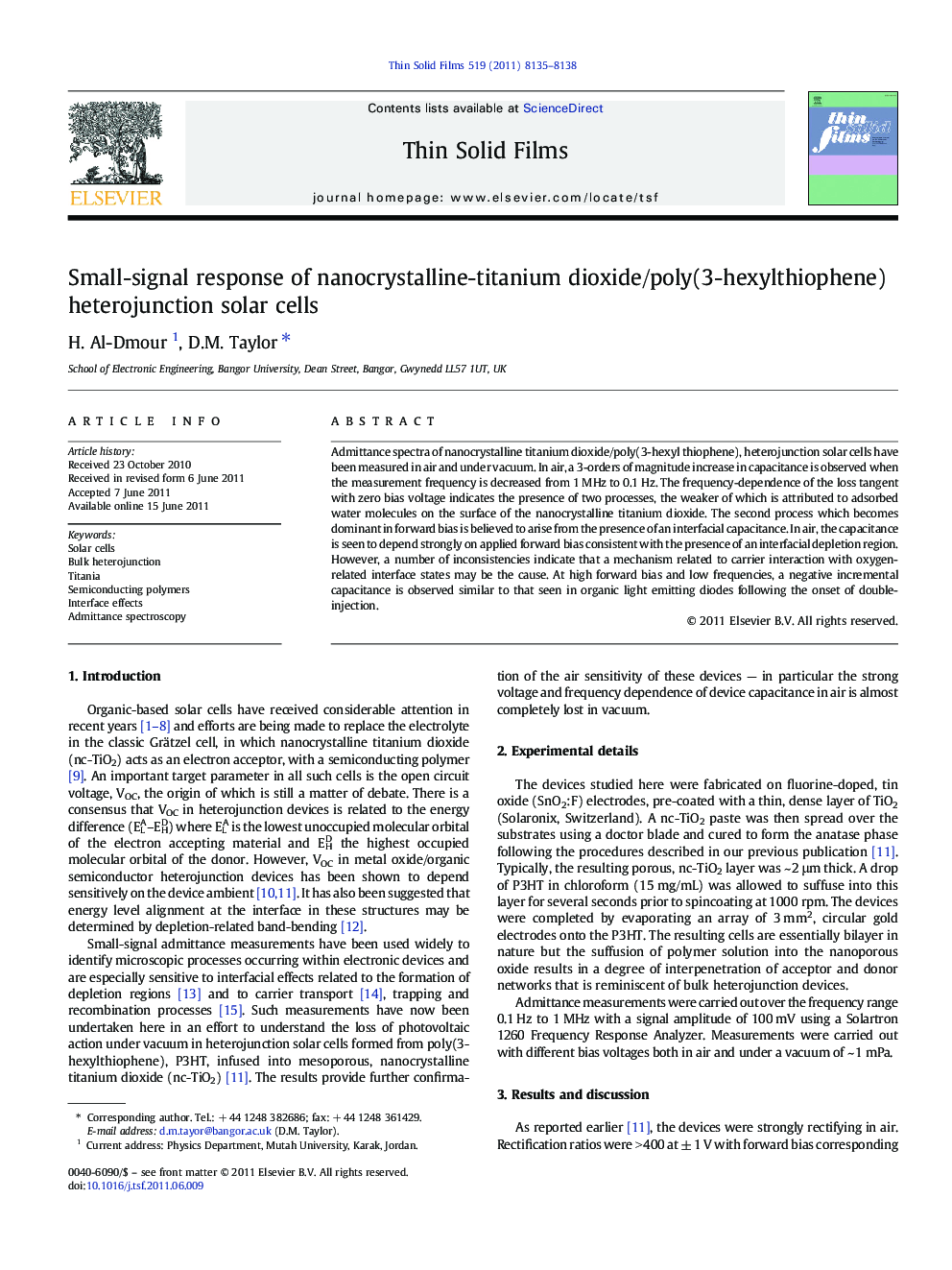| Article ID | Journal | Published Year | Pages | File Type |
|---|---|---|---|---|
| 1667842 | Thin Solid Films | 2011 | 4 Pages |
Admittance spectra of nanocrystalline titanium dioxide/poly(3-hexyl thiophene), heterojunction solar cells have been measured in air and under vacuum. In air, a 3-orders of magnitude increase in capacitance is observed when the measurement frequency is decreased from 1 MHz to 0.1 Hz. The frequency-dependence of the loss tangent with zero bias voltage indicates the presence of two processes, the weaker of which is attributed to adsorbed water molecules on the surface of the nanocrystalline titanium dioxide. The second process which becomes dominant in forward bias is believed to arise from the presence of an interfacial capacitance. In air, the capacitance is seen to depend strongly on applied forward bias consistent with the presence of an interfacial depletion region. However, a number of inconsistencies indicate that a mechanism related to carrier interaction with oxygen-related interface states may be the cause. At high forward bias and low frequencies, a negative incremental capacitance is observed similar to that seen in organic light emitting diodes following the onset of double-injection.
